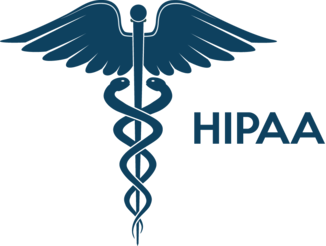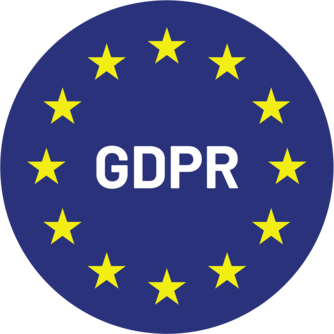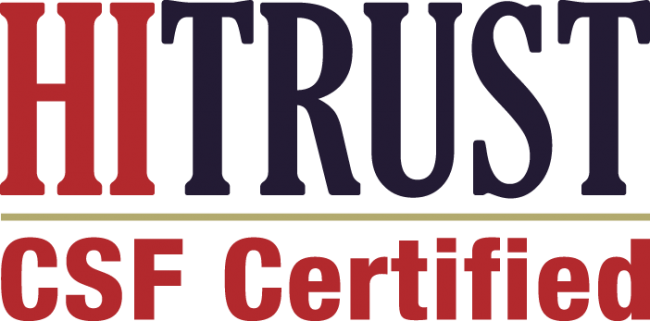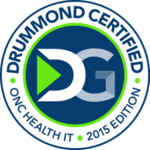The healthcare landscape is undergoing a fundamental transformation, shifting from volume-based models that reward the quantity of services delivered to value-based care that prioritizes patient outcomes, quality, and cost-effectiveness. At the intersection of this transformation lies Remote Patient Monitoring (RPM), a powerful tool that’s proving essential for health systems navigating the complexities of value-based care while maintaining financial sustainability.
The Growing Imperative for RPM in Value-Based Care
Value-based care models hold healthcare providers accountable for both the cost and quality of care they deliver. Under these arrangements, health systems bear financial risk for poor outcomes, unnecessary hospitalizations, and preventable complications. This makes proactive, continuous patient monitoring not just beneficial but essential for financial viability.
Medicare payments for RPM exceeded $500 million in 2024, reflecting the program’s rapid growth and CMS’s confidence in its value proposition. More tellingly, Medicare RPM adoption has surged by over 57% since 2020, demonstrating how quickly healthcare systems are recognizing RPM as a strategic necessity rather than an optional innovation.
The numbers behind this growth are compelling. The global RPM market, estimated at $14 billion in 2023, is expected to reach $41.7 billion by 2028, growing at an annual rate of 20.1%. This explosive growth reflects not just technological advancement but a fundamental realignment of how healthcare is delivered and reimbursed.
Direct Impact on Value-Based Care Metrics
Reducing Hospital Readmissions
Hospital readmissions represent one of the most significant challenges to value-based care success. Approximately 20% of Medicare beneficiaries experience readmission within 30 days, triggering penalties under CMS’s Hospital Readmissions Reduction Program that can reduce payments by up to 3%.
RPM directly addresses this challenge by enabling continuous monitoring during the critical post-discharge period. Real-world implementations have demonstrated remarkable results: healthcare organizations have achieved a 75% reduction in 30-day readmissions among high-risk patients, a 71% decrease in hospital readmissions among CHF patients, and a 53% decrease in 30-day readmission rates among heart failure patients.
The financial impact is substantial. For an average hospital, avoiding one excess readmission results in reimbursement gains of $10,000 to $58,000 for Medicare discharges. When scaled across entire patient populations, these savings become transformative for health system financial performance.
Managing Chronic Conditions Proactively
Chronic disease management is the cornerstone of value-based care, representing the majority of healthcare spending and the greatest opportunity for improving outcomes while reducing costs. RPM enables the shift from reactive crisis management to proactive prevention.
By continuously monitoring vital signs and physiological parameters, RPM systems detect subtle changes before they become acute episodes requiring emergency intervention. RPM devices lead to a 56% reduction in hospitalizations, translating directly into improved value-based care metrics and reduced costs.
This proactive approach is particularly powerful for conditions like diabetes, hypertension, heart failure, and COPD, where early intervention can prevent costly complications and emergency department visits.
Financial Benefits Beyond Quality Metrics
Medicare Reimbursement Opportunities
RPM creates new, sustainable revenue streams that align perfectly with value-based care objectives. Medicare reimburses for multiple RPM services through established CPT codes covering device setup, data transmission, and treatment management time.
By delivering 20 minutes of remote patient monitoring per month, each Medicare beneficiary can generate reimbursement of more than $1,000 over 12 months. This reimbursement model rewards continuous care management rather than episodic encounters, perfectly aligning financial incentives with value-based care goals.
For health systems with significant Medicare populations, these reimbursements add up quickly while simultaneously improving the quality metrics that determine value-based care bonuses or penalties.
Operational Efficiency and Resource Optimization
RPM reduces the burden on clinical staff by automating data collection and enabling remote monitoring of larger patient populations. This efficiency allows health systems to extend care management to more patients without proportional increases in staffing costs.
The technology also enables more targeted resource allocation, with algorithms identifying high-risk patients who need immediate attention while providing routine oversight for stable patients. This stratification ensures clinical resources focus where they create the most value.
The HealthViewX Advantage in RPM Implementation
Successfully implementing RPM requires more than just providing devices to patients. It demands a comprehensive platform that integrates seamlessly with existing workflows, provides actionable insights from monitoring data, and ensures compliance with billing requirements.
The HealthViewX RPM platform addresses these challenges through an integrated approach designed specifically for health systems navigating value-based care arrangements:
Seamless EHR Integration
HealthViewX integrates RPM seamlessly into existing electronic health records and workflows, ensuring smooth data management and analysis. This integration eliminates the friction that often derails RPM programs, allowing clinical teams to access patient data within their familiar EHR environment rather than toggling between multiple systems.
Comprehensive Workflow Management
The HealthViewX Remote Physiologic Monitoring application provides an integrated solution that combines advanced monitoring capabilities with streamlined workflow management. The platform automates routine tasks like data collection, alert generation, and documentation, freeing clinical staff to focus on patient interaction and clinical decision-making.
Proven Financial Performance
Healthcare organizations using HealthViewX have achieved measurable financial results. Implementations have shown an average increase of $105 per patient per month in successfully billed RPM services, a 43% reduction in billing staff time devoted to RPM claims processing, an 89% first-pass claim acceptance rate compared to the industry average of 70%, and an ROI of 4:1 within the first year.
These metrics demonstrate that with the right platform, RPM becomes not just clinically beneficial but financially transformative.
Patient Engagement and Education
The HealthViewX platform recognizes that technology alone doesn’t drive outcomes—engaged patients do. The system includes patient portals that enable individuals to track their progress, understand how lifestyle choices affect their health metrics, and take active roles in their care. This engagement leads to better treatment plan adherence and improved health outcomes, both critical for value-based care success.
Strategic Considerations for Health System Leaders
Alignment with Value-Based Contracts
As health systems take on more risk through value-based contracts with Medicare Advantage plans, ACOs, and other arrangements, RPM becomes essential infrastructure rather than a nice-to-have program. The continuous monitoring, early intervention capabilities, and preventive focus of RPM directly address the financial risks inherent in these contracts.
Health systems should evaluate RPM platforms based on their ability to impact the specific quality metrics and cost drivers embedded in their value-based contracts. The HealthViewX platform’s comprehensive approach to chronic disease management, readmission reduction, and preventive care makes it particularly well-suited for this strategic alignment.
Population Health Management at Scale
Value-based care requires managing populations, not just treating individual patients. RPM enables this population-level management by providing real-time visibility into the health status of entire patient cohorts.
Over 350 hospitals across 39 states have treated patients at home under CMS’s Acute Hospital Care at Home waiver as of late 2024, demonstrating how RPM and remote monitoring are enabling entirely new care delivery models that reduce costs while maintaining or improving quality.
Building Sustainable Programs
The key to RPM success lies in creating sustainable programs that deliver clinical value while maintaining financial viability. This requires platforms that handle the full spectrum of implementation challenges, from device distribution and patient education to workflow integration and billing compliance.
HealthViewX’s comprehensive approach addresses these challenges systematically, providing health systems with the infrastructure needed for long-term RPM success rather than point solutions that solve isolated problems.
The Path Forward
The convergence of value-based care incentives, Medicare reimbursement policies, and technological capabilities has created an unprecedented opportunity for health systems to improve outcomes while enhancing financial performance through RPM.
The global RPM market is expected to grow at a CAGR of 18.2%, reaching $45 billion by 2030, driven by expanding Medicare reimbursement policies and increasing prevalence of chronic diseases. Health systems that establish robust RPM capabilities now will be positioned to thrive in an increasingly value-based healthcare landscape.
The evidence is clear: RPM is not a peripheral innovation but a core strategic imperative for health systems committed to value-based care. With platforms like HealthViewX providing the comprehensive infrastructure needed for successful implementation, health systems can confidently invest in RPM knowing they’re building sustainable programs that deliver both clinical and financial returns.
Conclusion
Medicare RPM represents a rare alignment of clinical benefit, patient satisfaction, and financial performance. By enabling proactive chronic disease management, reducing preventable readmissions, and creating new reimbursement opportunities, RPM directly addresses the core challenges of value-based care.
Health systems that implement comprehensive RPM programs with platforms like HealthViewX position themselves for success in value-based arrangements while improving the care they deliver to their most vulnerable patients. In an era where healthcare reimbursement increasingly rewards value over volume, RPM has evolved from an innovative experiment to an essential component of health system strategy.
The question is no longer whether to implement RPM, but how quickly health systems can deploy it effectively across their patient populations. With the right technology partner and strategic approach, RPM becomes a powerful engine for achieving both the clinical outcomes and financial sustainability that define success in value-based care.



